The 16 Days Annapurna Circuit Trek offers trekkers an incredible experience through some of Nepal’s most breathtaking landscapes. They’ll start in Kathmandu, navigating everything from lush valleys to high-altitude deserts, while also soaking in the vibrant cultures of Tibetan villages. One memorable moment often shared is the thrill of crossing Thorong La Pass, the highest point of the trek. As they prepare for this adventure, many wonder what unique challenges and rewards await them on this path. What essential tips can help them fully embrace this journey?
This experience made our list of the 25 Best Treks And Hiking Tours In Pisang.
Key Points
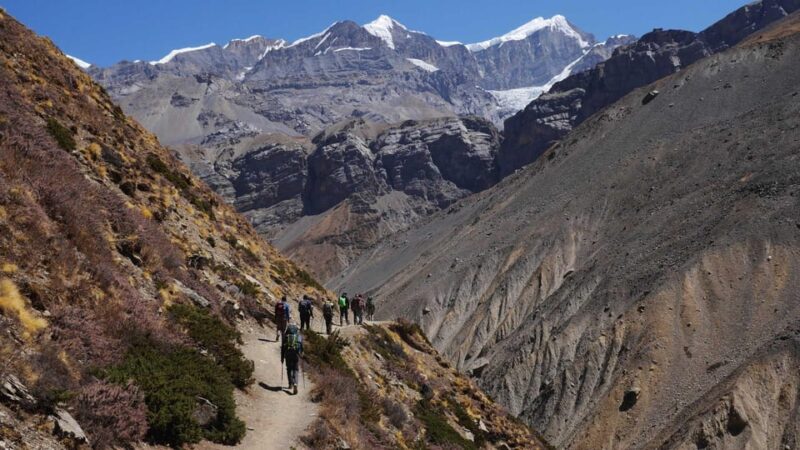
- The 16-day Annapurna Circuit Trek features stunning landscapes, traditional villages, and high-altitude experiences, including crossing the Thorong La Pass at 5,416 meters.
- The trek begins in Kathmandu and gradually ascends through diverse terrain, allowing for acclimatization in Manang with opportunities for short hikes.
- Moderate fitness is required; training is recommended for a smoother journey, especially to handle the varying temperature conditions and altitude.
- The package includes airport transfers, accommodations, experienced guides, and porters, while personal expenses, travel insurance, and international airfare are excluded.
- Optimal trekking seasons are spring (March to May) and autumn (September to November) for mild weather and clear skies, enhancing the trekking experience.
Trek Overview
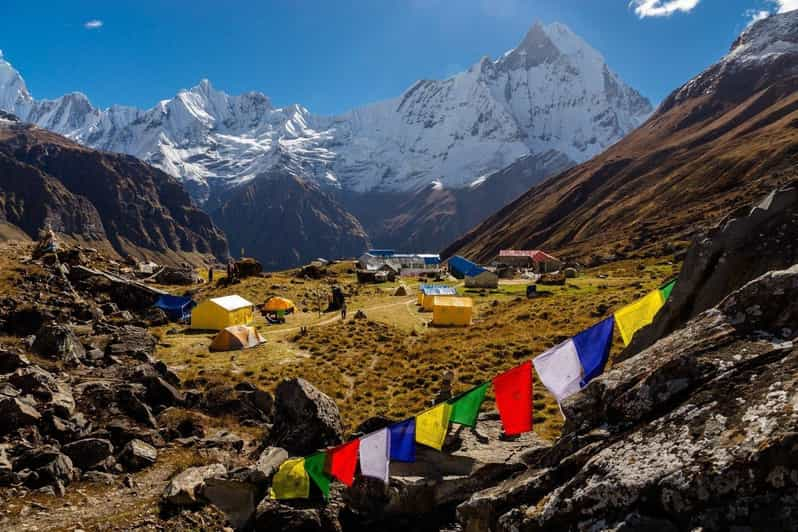
The Annapurna Circuit Trek, spanning 16 days and starting from $950 per person, offers adventurers a chance to explore breathtaking landscapes and rich cultural heritage while enjoying the thrill of high-altitude trekking.
It’s essential to pack wisely; sturdy boots and warm clothing are a must. Many trekkers recommend layering, as temperatures can vary dramatically.
Personal experiences often highlight the camaraderie formed within groups, making the trek even more memorable.
With free cancellation up to 24 hours before departure, planning remains flexible. Booking now and paying later can ease financial stress.
The trek’s moderate fitness requirement means most can tackle it, but a bit of training beforehand will make the journey smoother and more enjoyable for everyone involved.
You can also read our reviews of more hiking tours in Pisang
Trek Highlights
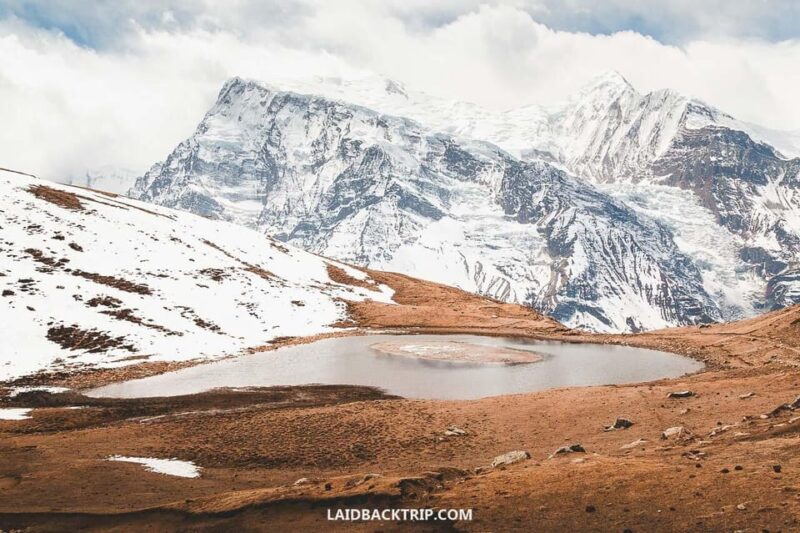
Crossing Thorong La Pass at 5,416 meters is a breathtaking highlight that trekkers eagerly anticipate on the Annapurna Circuit, offering stunning views and a sense of accomplishment.
As they ascend, trekkers experience diverse landscapes, from lush valleys to high-altitude deserts. The traditional Tibetan villages along the route invite exploration, showcasing rich cultural heritage and warm hospitality.
Acclimatizing in scenic Manang, many opt for short hikes to fully embrace the majestic surroundings. Trekkers often share stories of the awe-inspiring panoramas of the Annapurna and Dhaulagiri ranges, which leave lasting memories.
To make the most of this adventure, staying hydrated and pacing oneself are essential tips for tackling this incredible journey.
Daily Itinerary

Embarking on the Annapurna Circuit Trek offers adventurers a well-structured daily itinerary that balances challenging treks with moments of culture and breathtaking scenery.
Each day unfolds a new adventure, starting with the vibrant energy of Kathmandu and leading into the serene landscapes of the Himalayas.
For instance, trekkers will appreciate the gradual ascent from Dharapani to Chame, where they can enjoy local delicacies and interact with friendly villagers.
Day seven is a highlight, allowing for acclimatization in Manang, where optional hikes provide stunning views.
As the trek progresses, the sense of achievement grows, especially when crossing Thorong La Pass.
It’s essential to stay hydrated and listen to your body, ensuring a safe and memorable journey.
Inclusions and Exclusions
When planning for the Annapurna Circuit Trek, trekkers should be aware of what’s included in their package and what additional expenses they might incur along the way.
The trek package typically covers airport transfers, two nights in a deluxe hotel in Kathmandu, twin-sharing accommodations during the trek, and the services of experienced guides and porters.
However, it’s essential to keep in mind that personal expenses like Wi-Fi, drinks, and laundry aren’t included.
Trekkers should also budget for travel insurance, international airfare, and visa fees.
One hiker recalls setting aside extra cash for tips, which felt rewarding after their trek, highlighting the importance of factoring in these additional costs for a smooth journey.
More Great Tours NearbyImportant Information

Preparing for the Annapurna Circuit Trek requires understanding the necessary fitness level, gear, and visa requirements to ensure a successful adventure. Trekkers should have a moderate fitness level to navigate the varied terrain and altitude changes. Packing the right gear is essential, such as warm clothing and sturdy boots. A valid Nepalese visa is required, which can be obtained upon arrival at the airport.
Here’s a quick reference table for important information:
| Item | Details |
|---|---|
| Fitness Level | Moderate fitness recommended |
| Gear | Warm clothing, sturdy boots |
| Visa | Obtainable on arrival |
| Weather Prep | Check forecasts and pack accordingly |
| Acclimatization | Vital for altitude adjustment |
- From Kathmandu: 18-Day Annapurna Circuit & Tilicho Lake Trek
- 28 Days Pisang Peak Climbing,Annapurna Circuit &Tilicho Trek
- 20 Days Annapurna Circuit Trek With Pisang Peak Climbing
- Kathmandu or Pokhara Budget: 12 Day Annapurna Circuit Trek
- Nar Phu Valley Trek – 12 Days
- From Kathmandu Budget: 16 Day Annapurna Circuit Trek
Preparation Tips
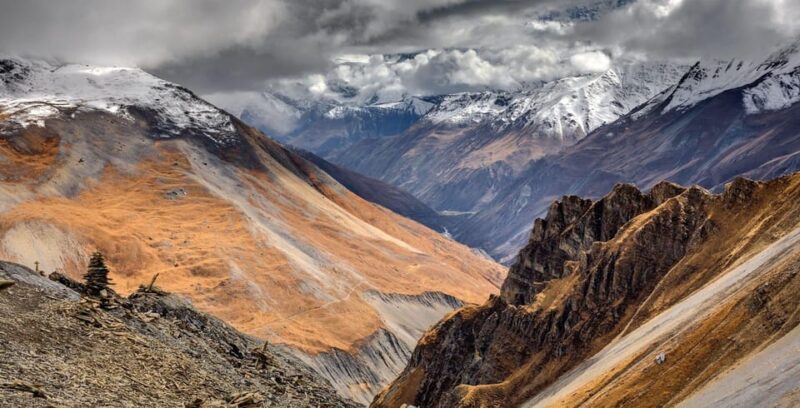
Trekkers should start their preparation by creating a detailed packing list tailored to the Annapurna Circuit’s unique challenges and varying climates.
It’s crucial to include layers of clothing, as temperatures can fluctuate dramatically. Sturdy trekking boots are a must; a personal anecdote from a seasoned trekker highlights how blisters can easily ruin a trip without proper footwear.
Plus, packing a personal water bottle, snacks, and a first-aid kit can make a huge difference.
Trekkers should also ensure they’re physically prepared by gradually increasing their hiking distance before departure.
Finally, understanding the altitude and planning for acclimatization days can help prevent altitude sickness.
These practical tips can set trekkers up for a successful and enjoyable adventure.
Best Time to Trek
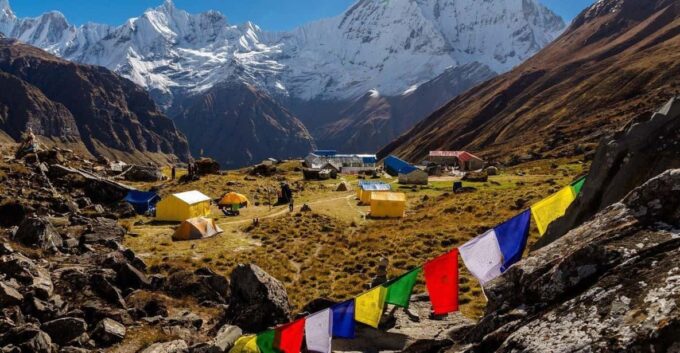
The best time to trek the Annapurna Circuit is during the spring (March to May) and autumn (September to November) seasons, as these months offer the most stable weather and stunning views. Trekkers often share that the lush greenery and blooming flowers in spring create an enchanting atmosphere. In autumn, the clear skies provide breathtaking panoramas of the Annapurna and Dhaulagiri ranges.
| Season | Advantages |
|---|---|
| Spring | Mild temperatures, blooming flora |
| Autumn | Clear skies, vibrant landscapes |
| Summer | Fewer crowds, but potential rain |
| Winter | Snow-covered trails, cold temperatures |
Choosing the right season can enhance the trekking experience, so planning accordingly is essential for an unforgettable adventure.
Cultural Insights
Immersing oneself in the rich cultural tapestry of the Annapurna Circuit reveals a blend of ancient traditions and vibrant local life that’s both fascinating and inspiring.
Travelers encounter warm-hearted locals, often welcoming them into their homes for a cup of tea or a traditional meal. Participating in local festivals, like the colorful Dashain, allows trekkers to experience the community’s spirit firsthand. They might even join in traditional dances, creating unforgettable memories.
Trekking through Tibetan villages, visitors can admire intricate monasteries and vibrant prayer flags fluttering in the wind. To enhance the experience, it’s helpful to learn a few basic Nepali phrases; locals appreciate the effort and respond with smiles, making each interaction even more meaningful.
Frequently Asked Questions
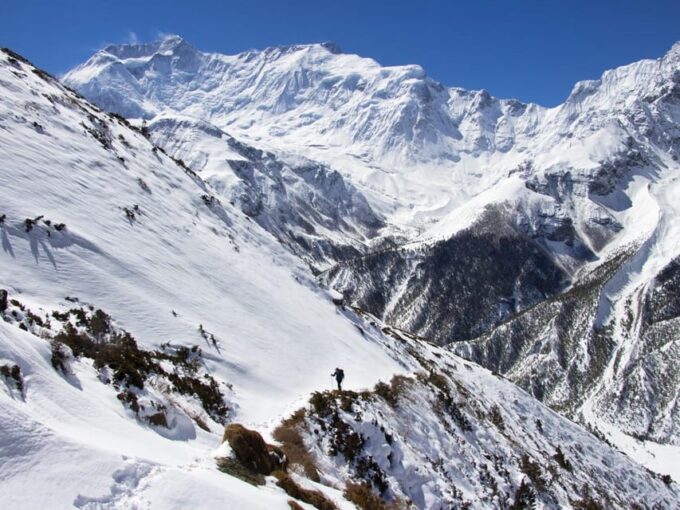
What Type of Food Is Available During the Trek?
During the trek, travelers enjoy a variety of local dishes, including dal bhat, momos, and noodle soup. They’ll also find snacks like energy bars and fruits, keeping them fueled for each day’s adventure.
Are There Any Communication Facilities Along the Route?
Along the route, trekkers can find communication facilities like local phone networks and Wi-Fi in some villages. They often rely on these for updates, sharing experiences, and staying connected with friends and family.
Can I Charge My Devices While Trekking?
While trekking, he can’t rely on consistent charging options. Many teahouses offer charging facilities for a fee, but it’s wise to carry a portable charger to ensure his devices stay powered throughout the journey.
Is There a Limit on Luggage Weight for Porters?
There’s typically a limit of around 15 kilograms per trekker for porters. He found it helpful to pack light, prioritizing essentials, which made his trek more enjoyable and manageable. Less weight means more freedom on the trail!
What Happens in Case of Altitude Sickness?
In case of altitude sickness, he should descend immediately, hydrate, and rest. Seeking medical help’s crucial if symptoms worsen. Staying informed about acclimatization techniques can prevent serious issues during high-altitude treks.
Recap
The 16 Days Annapurna Circuit Trek is an adventure of a lifetime, blending breathtaking scenery with rich cultural experiences.
As trekkers navigate through charming villages and tackle the challenging Thorong La Pass, they’ll create memories that last forever.
With proper preparation and the right mindset, anyone can enjoy this incredible journey.
So lace up those boots, embrace the challenge, and get ready to be awed by the beauty of the Annapurna region.
It’s an experience you won’t forget!
You can check availability for your dates here:More Hiking & Trekking Tours in Pisang
More Tour Reviews in Pisang
Not for you? Here's more nearby things to do in Pisang we have reviewed
- 12-Days Short Annapurna Circuit Trek
- From Kathmandu: 10-Day Annapurna Circuit Trek
- From Kathmandu: 12-Day Annapurna Circuit Trek
- Short Annapurna Circuit Trek 09 Days .
- From Kathmandu: 12-Day Scenic Annapurna Circuit Trek
- Annapurna Circuit Trek 14 Days
- 2 Best Guided Tours In Pisang
- 25 Best Treks And Hiking Tours In Pisang
- 6 Best Private Drivers In Pisang
- From Kathmandu: 15 Day Annapurna Circuit With Poon Hill Trek
- From Pokhara : 6-Days Private Manang Trek
- Annapurna Circuit Short Trek
